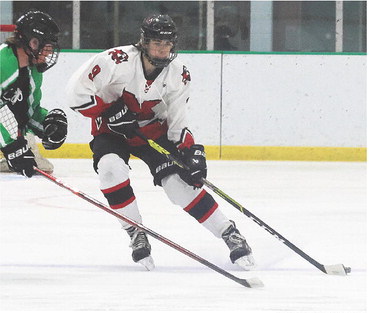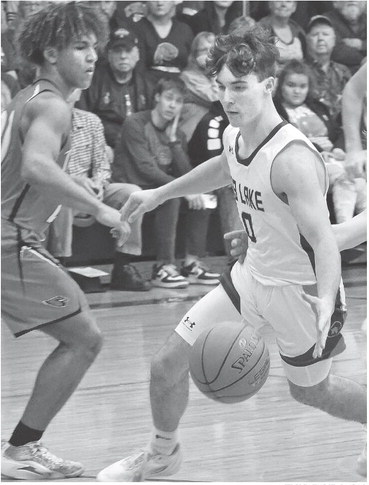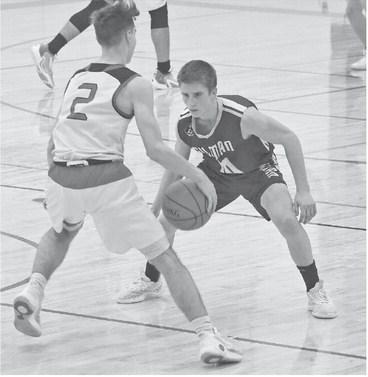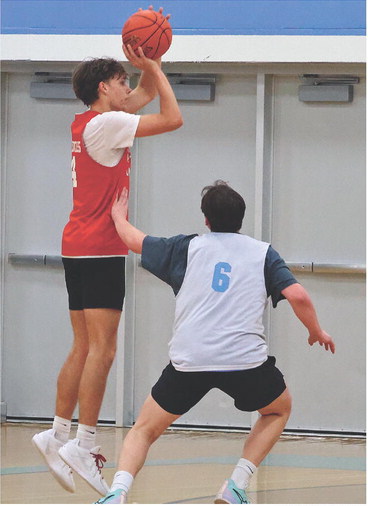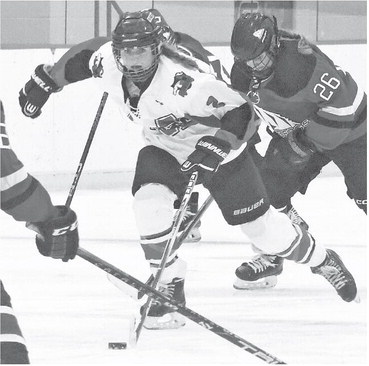High anxiety, depression reported in study on impact of school closures
A research study led by University of Wisconsin health researcher and WIAA Sports Medical Advisory Committee member Dr. Tim McGuine suggests school closures and sports cancellations amid the COVID-19 pandemic have had significant impacts on the state’s highschool student athletes.
The objective of the study, conducted in May, was “to identify how COVID-19 related school closures and sport cancellations in Wisconsin have impacted the health of adolescent athletes.”
The findings, which were presented Tuesday morning in a videoconference with school administrators, health offi cials and statewide media, show increases in anxiety and depression among students and decreases in their physical activity and quality of life.
A total of 3,243 adolescent athletes in Wisconsin were surveyed. They were recruited through a mass social media and email campaign. Students needed parental consent to respond. Respondents for the survey, which took about seven minutes for students to complete, came from 71 of Wisconsin’s 72 counties. They averaged just over 16 years of age and 58% of them were female.
“We had kids from 71 of 72 counties complete the survey for us, which is really great because then we could show how this wasn’t just affecting one or two counties but was representative of this state as we know it,” McGuine said.
McGuine said data had already existed from five years of previous studies on depression, physical activity and quality of life that could be used for comparisons.
The eye-catching numbers from the May study showed 65% reported anxiety symptoms in May 2020, including 13.4% reporting severe anxiety and 11.7% reporting moderate anxiety; 68% reporting symptoms of depression, including 33.4% reporting moderate to severe symptoms and a 50% drop in physical activity in May.
Overall, in ranking their health-related quality of life scores on a scale of 0-100 for physical, psychosocial and total quality of life, student-athletes averaged a score of 78.4, significantly lower than the historical average of 90.9%.
“Physical activity has a beneficial effect on a wide range of outcomes in athletes,” McGuine said during Tuesday’s videoconference. “We know they do better in a lot of things if they’re physically active. Right now if you talk to medical providers, they’ll talk about the importance of exercise and organized sports as an intervention to help kids get over depression, get over anxiety. These are things that are closely related. We think that our low mental health scores are undoubtedly related and closely related to low physical activity scores.”
The study concludes that an estimated 66,000 Wisconsin adolescent athletes are at risk for depression. In the short term, that can impact whether student use drugs and alcohol, stay in school or engage with peers. In the long term, there is the risk of disorders becoming chronic and influencing whether they go on to college, use drugs and alcohol extensively or form meaningful lifelong relationships.
Under the heading “prevalence of anxiety symptoms in adolescent athletes during COVID-19 related school closures and sport cancellations in Wisconsin,” 34.7% of athletes did say they had minimal or no symptoms and 40.3% reported mild symptoms.
“It’s interesting that 25% had moderate or severe anxiety,” McGuine said. “That was stunning in itself that we saw this first response that wow something is going on here.”
Under the heading of “prevalence of depression symptoms in adolescent athletes during COVID-19 related school closures and sport cancellations in Wisconsin,” 32.2% reported minimal or no symptoms compared to 68.6% historically, 34.8% reported mild symptoms compared to 21.7% historically and only 9.7% had reported severe symptoms according to historical data compared to the 33.4% this study found in May.
“You can’t turn on the news today without being chronically depressed looking at what’s going on and what’s being said about the pandemic,” McGuine said. “We already know we have a high level of anxiety and depression built in. Then without giving these kids an outlet of physical activity we’re building on that mental health or anxiety because of that. We also think that moving forward that these issues are going to be manifested to a greater degree the longer we keep kids out of sports and exercise opportunities.”
The quality of life scores, McGuine said, provide a sobering perspective of how tough this period of distancing has been on some young student-athletes.
“I did some background work, I did some literature reviews and found that with these scores, the only group they were higher than were kids with chronic injuries or illnesses,” McGuine said. “The kids with childhood cancer, cerebral palsy, diabetes, serious health issues had quality of life scores that were 74, 75. Our quality of life scores for kids in Wisconsin were not much higher in May.”
McGuine said, going forward, the goal is to do comparison studies once schools and sports do resume and the search for funding is already underway. Unfortunately, the current study is unable to break down what the key sources are for anxiety and depression.
“It could be school closures, it could be cancellations,” he said. “It could be the economic uncertainty I’m facing right now. Some kids may report anxiety and depression levels related to the fact that the unemployment rate went from 3% to over 12% in a month.”
Inevitably, the discussion during Tuesday’s teleconference turned toward starting school and sports again in the fall and neither the logged-on health offi cials nor WIAA officials were ready to give a solid answer.
“The hard part with this is we don’t really know what next month brings,” said Dr. Kevin Walter, who is the director of Pediatric and Adolescent Sports Medicine at Children’s Hospital of Wisconsin and associate professor at Wisconsin Medical College, as well as the chair of the WIAA’s Sports Medical Advisory Committee. “Being able to predict what’s going to happen in August is impossible.”
“If we have members who are open and want to have a regular season we will do all within our ability to help those opportunities to go forward,” WIAA executive director Dave Anderson said. “If our members are open and desire to have a tournament opportunity until such a time as our board of control would point us in a different direction or give us different marching orders, we will do all that we can to provide a tournament opportunity for those members who are open and would desire one.”
McGuine was asked about balancing the risks of students’ mental health versus the risks of spreading COVID-19.
“There’s a growing body of evidence that not only are these kids least likely to get this virus, they seem to be less likely to pass it on,” he said. “So that’s important. There were studies back in April looking at it worldwide that showed that school closures did not have a meaningful impact on the affection or death rates. I understand I don’t want to put people at risk or elevating risk for getting back to sports. At the same time we have to understand there might be some compromise that we can do. Is there a way to get kids involved and to protect the most vulnerable?”
It was also asked what might happen if there is a mix of schools or conferences that have or don’t have the green light from county health departments to compete.
“It certainly is worth having advance conversations as a conference, as conference administrators, as conference athletics directors and to see if there is some common ground as a conference that you are able to identify under a number of different hypothetical scenarios,” Anderson said. “I can tell you that a number of different hypotheticals are discussed in this office every day. Those same hypotheticals are being talked about across the Midwest between myself and this staff and other state association directors and executives. All of us are in the same boat looking at how best to answer some of those questions, but I would reemphasize that our bylaws and that segment which was shared with everyone would be the place that we would begin from.”
